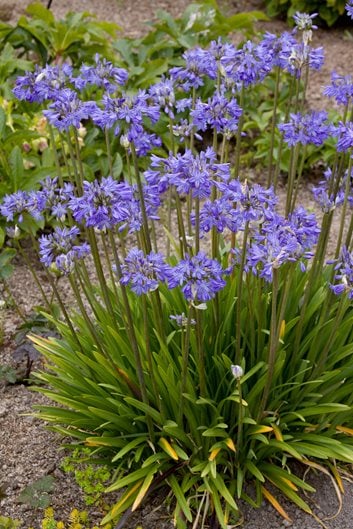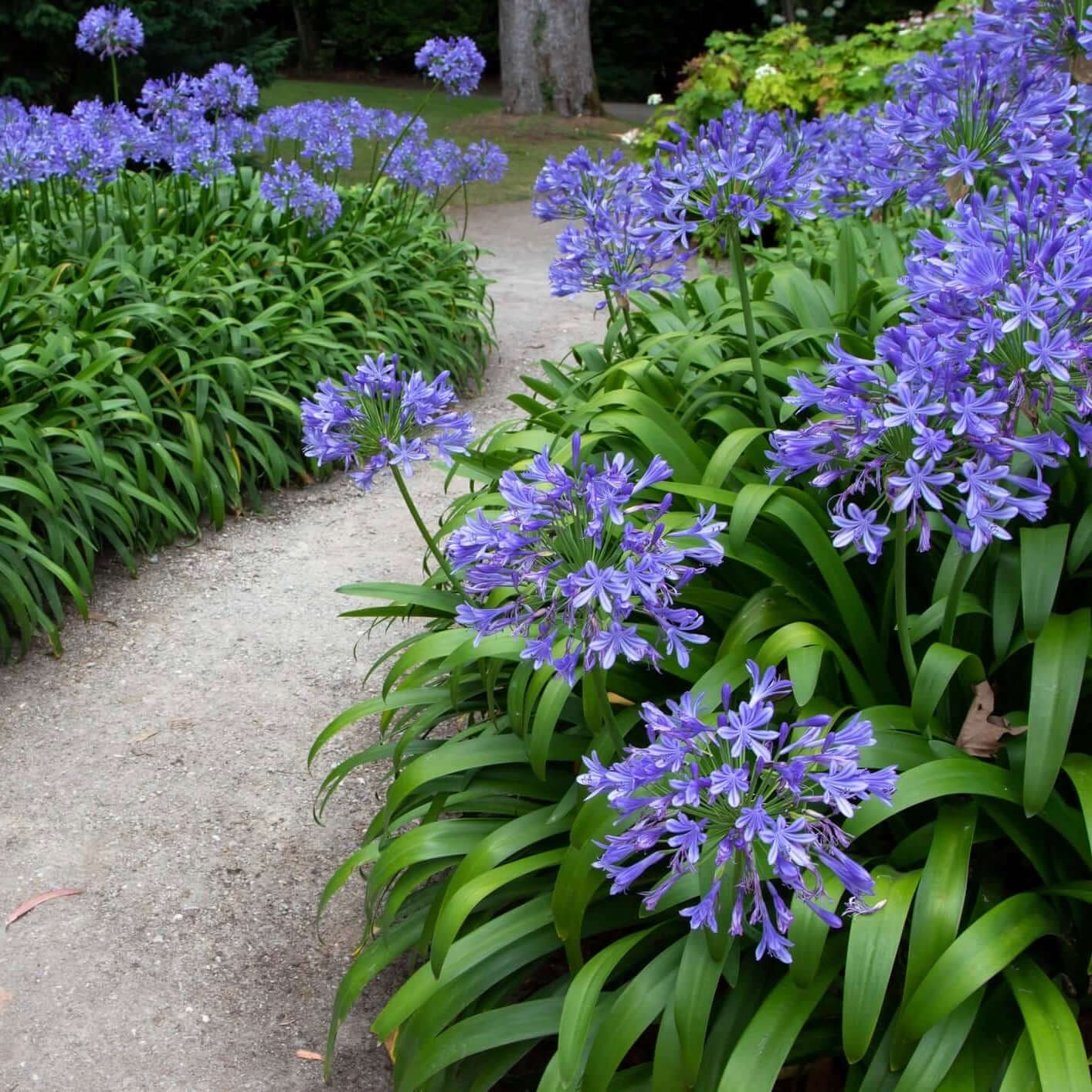Expanding Agapanthus: A Full Overview to Beautiful Blooms
Expanding Agapanthus: A Full Overview to Beautiful Blooms
Blog Article
Unleashing the Secret to Successful Agapanthus Farming: Idea for a Flourishing Yard
In the world of horticulture, cultivating agapanthus effectively calls for a tactical technique that incorporates different aspects of plant treatment. By understanding the nuances of agapanthus growing, one can create an atmosphere where these plants grow and grow abundantly.
Planting Agapanthus: Ideal Practices
When planting Agapanthus, correct soil prep work is important for ensuring successful development and development of these lovely blossoms. Agapanthus, generally referred to as Lily of the Nile or African lily, prospers in well-draining dirt with a somewhat acidic to neutral pH degree - Agapanthus. Prior to planting, it is critical to modify hefty clay dirts with raw material such as compost or peat moss to boost water drainage and provide vital nutrients for the plants
To plant Agapanthus, pick an area that gets complete sunshine to partial color, as this will certainly advertise healthy growth and plentiful flowering. Dig a hole two times the diameter of the plant's root round and position the Agapanthus at the exact same depth it was previously growing. Gently backfill the opening with soil, weighing down securely to eliminate any air pockets around the origins.
Water the freshly planted Agapanthus extensively and proceed to maintain the dirt uniformly wet, especially during the plant's energetic expanding season. Agapanthus. Applying a well balanced fertilizer once a month can even more sustain the plant's growth and flowering. By adhering to these ideal methods for growing Agapanthus, you can produce a spectacular display of these exciting flowers in your yard
Suitable Soil Conditions for Agapanthus
For optimum development and blooming success of Agapanthus plants, guaranteeing the dirt conditions are ideal is crucial. Agapanthus thrives in well-draining dirt with a somewhat acidic to neutral pH degree varying from 6.0 to 7.0. This type of dirt enables ample water drain, preventing waterlogging which can lead to root rot. To enhance soil water drainage, think about including raw material such as compost or peat moss when preparing the growing site. Moreover, Agapanthus prefers soil that is rich in nutrients, so including a balanced plant food during the expanding season can promote healthy and balanced development and dynamic flowers.

Watering and Fertilizing Tips
To guarantee healthy and balanced growth and dynamic flowers, appropriate watering and feeding strategies are essential for successful Agapanthus cultivation. Agapanthus plants take advantage of regular watering, particularly during the growing period. It is advised to water deeply when a week, ensuring the soil is wet yet not waterlogged. During warm weather condition or in pots, even more frequent watering may be needed to avoid the soil from drying totally.
When it comes to feeding Agapanthus, a balanced plant food with equivalent parts nitrogen, phosphorus, and potassium can be used in the spring to promote healthy and balanced development and blooming. Slow-release fertilizers are excellent for giving nutrients progressively over a prolonged period. Stay clear of over-fertilizing, as this can cause excessive vegetation growth at the expenditure of flowers.
Additionally, including natural matter like garden compost into the dirt can improve nutrient degrees and improve dirt framework, assisting in the overall health of the Agapanthus plants. By adhering to click for more info these watering and fertilizing suggestions, garden enthusiasts can ensure their Agapanthus plants prosper and produce spectacular display screens of flowers.
Trimming and Deadheading Techniques
Proper trimming and deadheading methods play an essential role in preserving the health and appearances of Agapanthus plants, matching the vital practices of watering and fertilizing for effective growing. Trimming Agapanthus entails getting rid of spent blossom heads, dead or yellowing leaves, and total shaping of the plant to promote far better growth. Deadheading, the process of removing faded blossoms, not only improves the plant's look but likewise urges more blooming.
When deadheading Agapanthus, it is a good idea to snip off the flower stem at the base making use of sharp, clean shears. This procedure reroutes the plant's power from seed manufacturing back right into origin and vegetation development, advertising a much healthier and a lot more robust plant. Routine deadheading can expand the blooming period of Agapanthus and prevent self-seeding, which can cause congestion.
In terms of pruning, Agapanthus generally take advantage of a light trim after flowering to clean up the plant and encourage fresh growth. Cutting back the invested blossom stems and removing any damaged or dead foliage assists keep the plant's vitality and general appearance. However, it is vital to avoid cutting into the crown of the plant, as this can compromise read more its health and wellness.

Protecting Agapanthus From Vermins and Diseases
Implementing reliable parasite and illness monitoring strategies is crucial to guarding the wellness and vitality of Agapanthus plants in cultivation. One usual insect that influences Agapanthus is the Agapanthus borer, a caterpillar that passages into the plant, creating damages to the leaves and blossoms.
In enhancement to parasites, Agapanthus are at risk to conditions such as origin rot and fungal fallen leave places. By staying vigilant and addressing bug and condition concerns immediately, garden enthusiasts can aid their Agapanthus prosper and flourish.

Conclusion
In verdict, successful growing of agapanthus calls for proper growing methods, suitable dirt problems, appropriate watering and feeding, routine trimming and deadheading, and security from insects and conditions. By following these this content suggestions and tricks, garden enthusiasts can make certain a prospering yard loaded with attractive agapanthus blossoms. Agapanthus. Remember to preserve consistent treatment and interest to information to promote the health and wellness and long life of these spectacular plants
When growing Agapanthus, appropriate dirt prep work is necessary for making certain effective development and development of these lovely flowers.Water the freshly planted Agapanthus extensively and proceed to maintain the soil evenly damp, specifically during the plant's active growing period.For optimum development and growing success of Agapanthus plants, guaranteeing the soil problems are excellent is essential. When hair transplanting or planting Agapanthus, guarantee the soil is well-prepared to supply the needed structure for the plants to establish themselves successfully. One typical insect that impacts Agapanthus is the Agapanthus borer, a caterpillar that tunnels right into the plant, creating damage to the leaves and blossoms.
Report this page